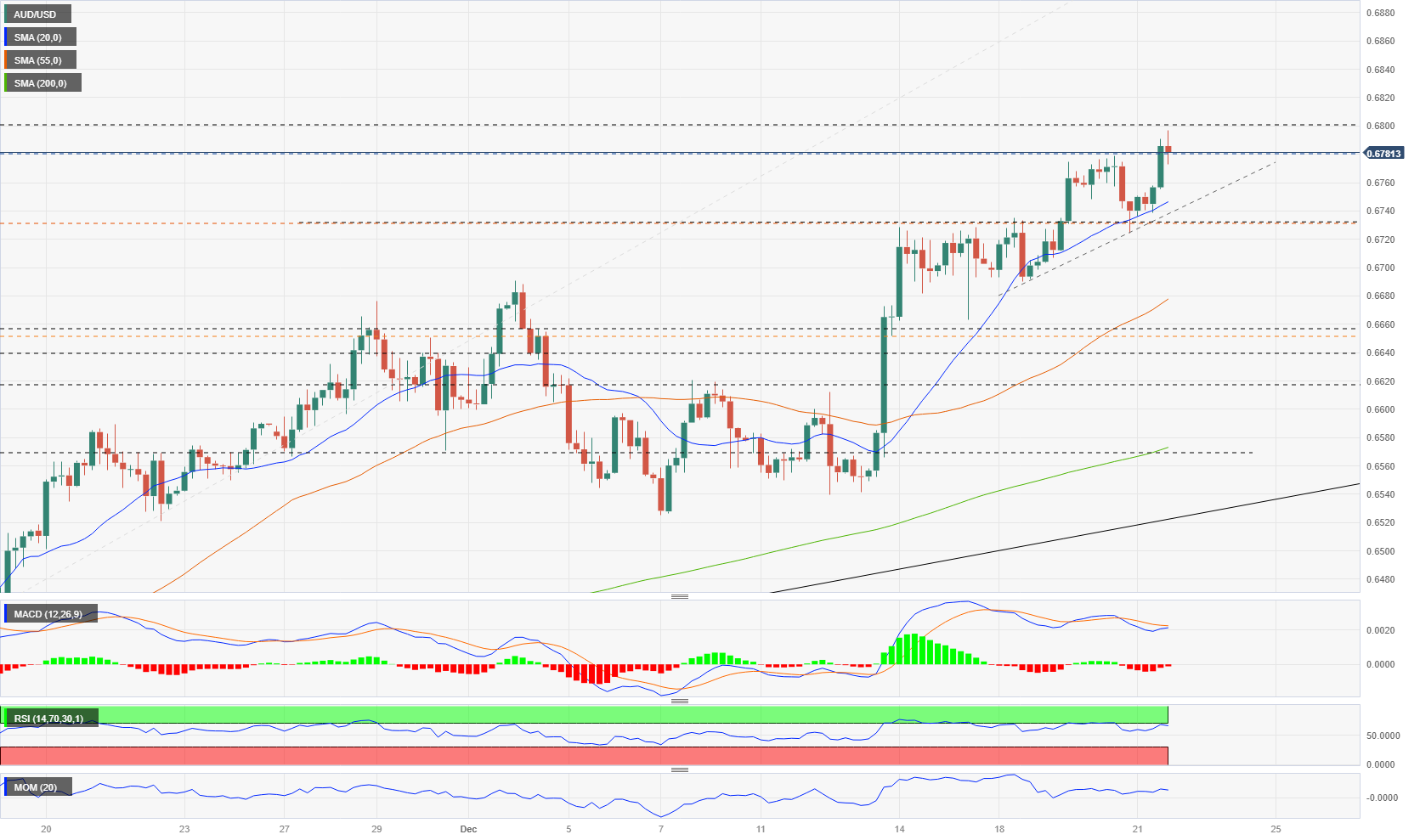- The US Dollar continues to slide, unaffected by US data and despite higher yields.
- The Fed’s preferred inflation gauge, the Core PCE, will be released on Friday.
- The AUD/USD maintains a bullish tone amidst thin holiday trading.
The AUD/USD rebounded from near 0.6715 and climbed to 0.6800, reaching a fresh four-month high. The key driver continues to be a weaker US Dollar. The rebound in Treasury yields did not help the Greenback.
The US Dollar Index dropped to test monthly lows, falling below 102.00. Treasury yields rebounded with the 10-year yield rising from a fresh monthly low at 3.83% to 3.90%. Economic data from the US showed mixed to negative numbers, with a revision of Q3 GDP from 5.2% to 4.9%, a decline in Initial Jobless Claims, and a slight increase in the Philly Fed.
The key report of the week is due on Friday, with the US Core Personal Consumption Expenditure Price Index (Core PCE). It is closely watched as it is a crucial consumer inflation indicator. Expectations are for a 0.2% monthly increase in November, with the annual rate falling from 3.5% in October to 3.3% in November. This number has the potential to impact the market. Australia will report Private Sector Credit, which is expected to show a modest acceleration compared to the previous month.
USD dynamics continue to be the key driver with markets in holiday-thinned trade, which could lead to erratic moves. The Dollar remains under pressure, but a correction seems overdue.
AUD/USD short-term technical outlook


The AUD/USD rebounded sharply and climbed to 0.6798, reaching its highest level since late July. It later pulled back but remains near 0.6800. The daily charts show a bias towards the upside; however, the price is nearing the upper limit of a bullish channel at 0.6820, and the Relative Strength Index (RSI) is in overbought levels, suggesting some consolidation around 0.6800. As long as it stays above 0.6600, the medium-term bias remains to the upside.
On the 4-hour chart, technical indicators offer mixed signals. The RSI is approaching 70, momentum is flattening, and the MACD continues to show divergences. Price is well above the 20-period Simple Moving Average (SMA), indicating potential for further gains. Immediate resistance stands at 0.6800, while support is at 0.6760, with a more relevant zone around 0.6735 (horizontal support, 20-SMA and uptrend line). A break below this level could weaken the outlook for the Australian Dollar.
Support levels: 0.6760 0.6730 0.6690
Resistance levels: 0.6800 0.6820 0.68400




